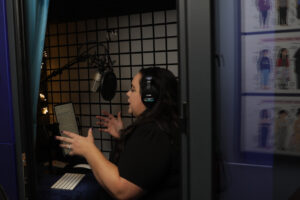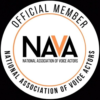Confident Public Speaking and The Great American Speeches
Being a confident public speaker isn’t easy. In fact, it’s usually something that people say they are deathly afraid of, something they definitely don’t look forward to. The old adage of “imagining your audience in their underwear” isn’t exactly the most helpful advice if you’re trying to prepare for an upcoming public speaking engagement.
So, what is it about great public speakers that make audiences listen closely and take action? What do they do with the power of their voice to influence their listeners?
Whether you’re running for class president, President of the United States or just giving a really important PowerPoint Presentation at your job, being a confident public speaker is a skill that will always serve you well as you move forward in your career and your life.
Me personally? I’ve always been a confident public speaker. I’m not sure where it comes from, but speaking in front of crowds has always come very naturally to me. I’m a natural born performer and an extrovert, so I’m comfortable around lots of people. That doesn’t mean that I don’t get nervous – I certainly do, but beyond naturally abilities and inclinations, there are some things that everyone can do to make speeches, presentations and public speaking successful.
Today, most of my speaking happens from behind the microphone, in my cozy, enclosed voiceover booth. I have the benefit most of the time of not being seen by my audience – whether that is the advertising representatives who have hired me to provide a voiceover for their commercial or industrial project, being a guest on a podcast, or performing for a casting director who is auditioning my voice for their clients. I don’t have to worry about what I look like, only what I sound like. When it comes to public speaking, the sound you make is only one part of it – you also need to be a confident presence standing at a podium in front of thousands of people or standing up in a conference room in front of seven other people.
Let’s talk a little bit about things you can do to be an effective and confident public speaker.
Using Accessible Language
One way to make sure that your audience is always on your side is to use accessible language. Great speechwriters for politicians and CEOs alike will ensure that their message gets across – and that’s just about basic listening comprehension skills. Public speaking is not a time to show off how many vocabulary words you’ve mastered thanks to Jeopardy! or The New York Times‘ crossword puzzle.

Martin Luther King Jr. delivered many great speeches in his lifetime, and he used very accessible language in his speeches. His very well-known “I Have a Dream” speech was known to clock in at an 8th or 9th grade reading level.
So, prior to delivering your speech, presentation or public address – take some time to analyze the language in your script. Does it make sense? Is it full of buzzwords or acronyms that some of your audience members won’t be familiar with? Do you have any too-long run-on-sentences that will be hard to digest by your listener? Does your speech have a clear beginning, middle and end?
Taking some time to consider your audience and listener in your script’s construction will go a long way in making your words even more understandable by your audience.
Speeches, especially the great ones, take advantage of key moments
When public speaking is done right, it can rally people to action – almost instantaneously.
If something is happening in your field, your industry or around your community – something that your audience will care about – using the fervor of the moment can be important catalyst when it comes to your speech or presentation being successful. When people care about an issue or a process, they’ll be even more invested in hearing what it is that you have to say about it. Using the power and momentum of a moment with your audience can keep them invested in your words as you make and illustrate your points to them.
Being specific, being deliberate and being honest are all ways to capture the magic and influence that a moment in time can possess.
The Power of Persuasion and Visual Aids
If you’re giving a presentation or a talk to an audience that doesn’t know much about your topic – it can sometimes be beneficial to utilize visual aids in your speech.
If you watch some of the recent Ted Talks or Tedx Talks from various regions, you’ll see a lot of the presenters use some presentation slides and/or imagery as part of their presentation. Visual aids can help connect listeners and audience members to your story. It can add some accessibility cues to folks that might have more trouble with listening comprehension with the spoken word in isolation. It can also hammer a point home if your audience members are on the fence as it pertains to your opinions or the points you’re trying to drive home.
You don’t want to overdo it – there’s definitely a balance to be struck between too much visual imagery, which can become distracting, and just the right amount that offers a strong supplement to your oral presentation.
Acceptance Speeches and Concession Speeches
When it comes to speeches that are present in our periphery year in and year out, they are acceptance speeches and concession speeches.
In Hollywood, actors are frequently asked to make acceptance speeches if they have won an award. No one wants to hear the dreaded music of the orchestra if they’re going too long! Having a few words prepared ahead of time makes these short public acceptance speeches impactful and heartwarming.
I had the opportunity to make an acceptance speech when I won the Voice Arts Award for Best Voiceover – E-Learning. The awards presentation was held in New York City overlooking Central Park. I remember the moment, but it’s kind of a blur to be standing on a stage, in a fancy gown in front of an audience full of your peers and people you admire. But, I had made sure to think about who I would thank if I won and what I would say.
For political acceptance speeches, this is when a candidate accepts their party’s nomination to run or when they rise to accept that they’ve won an election. It’s usually a very dramatic and exciting moment that can often be filled with stress. It might be the first time people are experiencing a candidate or hearing about their platform. When it comes to their acceptance speech, it might be the moment that they lay out their plans and goals for their candidacy and their time in office.
A concession speech is probably one of the hardest public speeches to give. You’re admitting defeat – usually in front of hundreds of your followers and supporters – and acknowledging that someone else ran a better race. It’s a moment that usually shows grace and compassion and sets that candidate up for what their future will hold – it leaves a lasting impression with the public in how they handle those challenging moments.
The Power of Repetition
Using repetition of words and phrases as a key theme in your speech can help add to the memorable moments or “soundbites” that your audience will walk away with. It’s also structurally a way to bookend your message by either starting or ending a phrase with the same word or cluster of words. It can add to the build, excitement and anticipation of your message.
There is an accepted adage in marketing called “The Rule of 7” that it takes someone hearing your brand/product name seven times before they remember it or take action on it. This type of advertising advice/thinking can also apply to public speaking. If there are key points or ideas that you want your audience to be able to repeat or spread by word of mouth after you deliver your address, consider finding ways to repeat them within your speech.
Confident Public Speaking in Conclusion
So, are you feeling better about your public speaking? It’s definitely a skill worth cultivating – being a confident
- Write your speech or presentation down. You may think you’ll remember it, but on the day of – you’ll be filled with all kinds of nerves and sensations you may not have experienced before. Having a copy of your speech on paper, index cards or on a fancy teleprompter will save the day. Don’t be prideful about having it memorized – make sure a copy is available before you begin.
- Practice it OUT LOUD in front of people before your event. I’m always surprised to hear that people don’t do a dry run of their speeches. Reading it to yourself off of your paper, computer or iPad is NOT THE SAME as actually reading it out loud. Take the time to actually read the entire thing out loud of a friend, a colleague or a member of your family before you step into the spotlight in front of hundreds of people.
- Write it and Revise it. Your first draft of your speech is probably not ready for primetime. After you’ve written out your speech or presentation, take some time to revise it. Remove things that seem like rambling. Make sure you have a clear beginning, middle and end and a strong call to action. Don’t be afraid to delete whole paragraphs of text if they aren’t getting your message across.
- Take your time. As Americans we tend to speak very quickly. When you’re delivering your message in public, you’ll want to make sure you read slow enough for your message to land. Also, if you’re using a public address system, you may need to pause to let the echo of your voice decay, before you begin your next sentence.
- Make eye contact. Take time to actually make eye contact with members of the audience, if you can see them. It helps to think of speaking to just one person, instead of speaking to hundreds of people. Think of the effects and change you can bring to one person versus everyone all at once.
- Consider accessibility needs. If you are delivering a speech to a large crowd, consider offering closed captioning service or live sign language interpreters to ensure that everyone has the opportunity to digest your presentation or your speech.
- Have fun! Public speaking can be scary, but it’s a skill that you can learn and master. My hope is that eventually you can leave a speaking engagement and say, “Hey! That was fun!”
Good luck and best of luck creating the next Great American Speech!






